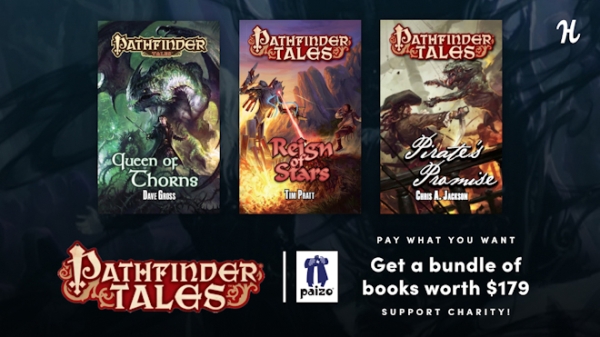Setting the Baseline
By The Warden
 Last week, as you may remember, I talked about getting back to basics using the classic dueling game, Rock, Paper, Scissors, and made a quick effort to draft up initial and official rules for the game. Why? To understand how oversights and expectations of our rules manipulate not only how designers create games, but how players understand them.
Last week, as you may remember, I talked about getting back to basics using the classic dueling game, Rock, Paper, Scissors, and made a quick effort to draft up initial and official rules for the game. Why? To understand how oversights and expectations of our rules manipulate not only how designers create games, but how players understand them.
In theory, there is no wrong way to present your game, but notice how I addressed the sentence with “in theory.” Rules are comparative and in the forty years since RPGs became a thing, we’ve built upon the works and sentences of many other designers before us to create the standards we know and love today. Along the way, there have been hiccups and there are key steps your rules can miss that will lead to confusion and re-interpretation at the table. This can be complicated by comparisons of your work with others, much in the same way one fictional author may be able to intertwine complex characters with a rich narrative while another can find success with bland characters operating in a massive tapestry of background and setting. Each author has their own style for presenting their work, but how that style is interpreted and appreciated will stem from the reader’s history with reading. The same applies for rules. If you started playing RPGs with the Moldvay D&D set, you’re going to have a different viewpoint on RPGs than someone who started out playing Warhammer or Vampire.
This is what I like to call the baseline and it’s the fundamental building block of any system or rules you will design in your lifetime. A game’s baseline assumes a certain understanding of the players’ history with these types of games (or any games in general, for that matter). For example, the level of detail your game goes into using dice types will depend on the game’s baseline. Is it an advanced game assuming players already have access to these types of dice and how they can get a hold of them or will your game use its own original dice (akin to many Fantasy Flight Games releases) provided in the core product? Another way to think of it is comparing a game’s baseline to the instructions for assembling your own bookshelf. Those instructions are written with a basic assumption of the builder’s experience and whether or not they’ll know which screwdriver has a Phillip’s head or if the entire process should use an Allen key.
A game’s baseline requires an understanding of your typical player’s knowledge of other games and that’s where this particular exercise can become quite tricky. It’s probably safe to say everyone is aware of how RPS is played, but not because of any official rules. When I drafted my version of RPS last week, it assumed the average player has a concrete understanding of the basics of the game and so I wrote it more as a “default guideline” for casual play instead of an original concept. This is vastly different from the rules provided on the USARPS League’s official rules page because their baseline is set for professional level of play. In other words, they’re looking at the game from the POV of two determined players overseen by a referee. The difference in baselines makes for an incredibly different interpretation of the rules while remaining exactly the same.
Let’s take a moment and step back to look at what I came up with on the fly for last week’s post. Perhaps something I should have qualified was that I wrote up this draft without reading or searching for any other versions of RPS available online (including those linked at the tail end of last week’s post). What you see is bang on exactly what I had devised in my head without influence. This week, I’ve had some time to read over and analyze other editions of RPS and its time to make some comparisons, all of which are broken down into three categories: terminology, detail, and presentation.
TERMINOLOGY
According to the official USARPS rules, each player chooses a “throw” to play in each round, while my version listed them as “launches.” Sure, they may be synonyms, but each term is chosen to act as both a verb and terminology at the same time. USARPS players can throw a rock, my version has them launching scissors. The USARPS rules take it a step further and provide terminology for every step of the throw, including terms like “the Pump,” “the Shoot,” and “engagement,” all of which break down every match into “bouts” between two players. Why? Because there’s a referee in their version of the game and the application of these terms is managed so that if a referee spots a foul during play, they have specific tools to call against the fouling player. Casual versions of the game do not require such concepts because their version is designed around the honour system and built on a principle of zero referee availability.
Think about it for any other professional sport. If you’re watching a hockey game and the ref blows the whistle and states, “The player looked like they went too far,” there’s going to be some challenges and the game is delayed. The verdict is too interpretive. By offering concrete rules and terminology, the ref can instead declare, “The player is offsides” and fall back on the terminology of the rules to prove their decision. When every player in the game understands that “offsides” refers to the position of the puck crossing a particular line on the ice before the player, everyone knows what to expect and the game can be played fairly between all involved. In road hockey, there are no concepts necessary because the intention of the game is to allow everyone to play a casual game and there are likely no red or blue lines on your block.
The same guidelines apply for RPGs and how terminology is devised and applied depends on the intensity of the game’s rules. For example, opportunity attacks in Pathfinder are put in place to challenge players’ movement during combat, whereas D&D Next rules foregoes such matters and allow all creatures in battle to move in and out as they please without consequence. Since D&D Next doesn’t care about opportunity attacks, it can describe such in a single sentence and move on, while Pathfinder‘s rules must incorporate detailed terminology on opportunity attacks for Gamemasters to make consistent judgement calls during play. The more precise your rules, the greater reliance you place on terminology.
DETAIL
By this, I mean the thoroughness of a game’s rules using exceptions or prohibitions within their terminology. In my edition of RPS, I didn’t not handle for any “illegal” launches and made the assumption all players will only use one of the three symbols provided. The USARPS makes no such assumptions and provides a list of forbidden throws during play. Not only that, but the USARPS includes a glossary at the tail end of their rules. I did not.
A game’s details are typically measured by its word count because greater detail requires more words, but there are other tools available to handle such matters. Artwork and charts, for example, can be used to demonstrate and detail specific rules and guidelines for play. Either way, the level of detail placed on a game demonstrates its complexity and doing so insinuates an inherent level of intensity of play. A game with less detail is assumed to be more casual and intuitive versus a highly detailed game where there are specific rules crosshatching between other rules to create an exact style of game. A roleplaying example is the difference between traditional RPGs and story games, where the emphasis is on player co-operation and enjoyment over strict adherence to the rules. A story game’s purpose is that everyone’s having fun and enjoying themselves, therefore the rules are not very precise and often highly interpretive. Tactical games using miniatures, on the other hand, present exact standards for movement, range, and reach within every single turn and thus require far more detail.
PRESENTATION
Finally, we come down to presentation, or how the game is offered to players and functions during play. Between our uniquely different rule for RPS, there appears to be little variation save for one factor. My version provides a concrete list using separated lines for fast reference during play, while the USARPS version mixes in the ranks of each throw within the body text. Minor adjustments, yes, but they can make all the difference for new players.
A game’s presentation is tailored to the experience and intensity of the players’ time with a game. In this case, because the USARPS rules are written for a professional level of play, it assumes everyone involved has locked down their understanding of the throws’ ranks, while my version is presented for first-time players and break off the ranks of each launch for quick reference during play. There are numerous tools available to game designers for enhancing their game’s presentation and most of them are visual-based tools, such as colour, white space, charts, and more. For example, if I wanted to publish my version of RPS, I may go so far as to provide illustrations of the symbols in action and present them using a visual graph with arrows indicated which symbol dominates during a launch. Even something as simple as double-spacing between paragraphs can have a profound effect on the game’s presentation and understanding because it takes certain assumptions into account for how often players will need to consult the rules.
A MATTER OF COMPLEXITY
Any game’s baseline is based on the inherent level of complexity and player experience a designer expects upon the game’s release. The three stages of your game’s baseline – terminology, detail, and presentation – can provide a vastly different experience versus those of another designer with the same game. It’s about knowing your audience and how to best address the mandatory concepts required for new players to comprehend and enact what you have designed. Too much text in a simple game and you risk turning your players away from the experience; not enough effort explaining its complexity and players could end up feeling confused or uncertain about its effectiveness.
Next week, let’s talk about building games with the intension of allowing for optional complexity, shall we? Until then, keep your paper on top of your rock and don’t run with scissors.


